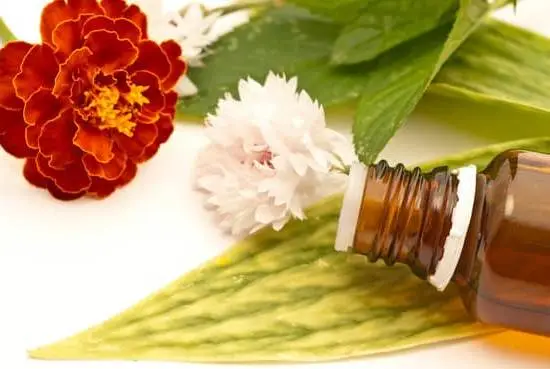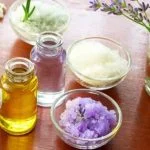Aromatherapy bath salts not only provide a relaxing and luxurious spa-like experience, but they also offer numerous benefits for both the mind and body. In this article, we will explore the process of making your own aromatherapy bath salts, allowing you to customize the scents and therapeutic properties to suit your specific needs.
The importance of self-care cannot be overstated, and taking a soothing bath with aromatherapy bath salts is a wonderful way to indulge in some much-needed pampering. These bath salts are infused with essential oils that have been used for centuries for their healing and therapeutic properties.
Whether you need to unwind after a long day, alleviate stress and anxiety, or simply enhance your overall sense of well-being, aromatherapy bath salts can help create an oasis of relaxation in your own home.
But what exactly are aromatherapy bath salts and how do they work? It’s important to understand the basics before you dive into creating your own custom blends.
By combining specially chosen essential oils with natural bath salts, these homemade creations release their aromatic fragrances when dissolved in warm water. As the scents waft through steamy air, they penetrate your skin and enter your bloodstream, providing an array of physical and emotional benefits that can transform your bathing experience into a rejuvenating ritual.
In the following sections, we will guide you through each step of making aromatherapy bath salts, from gathering the necessary ingredients to adding personalized touches. You’ll learn how to choose the right essential oils for different purposes, discover measuring techniques for accurate proportions, learn about creative ways to enhance color and scent combinations, understand best practices for storage and shelf life preservation, and take safety precautions while handling these aromatic treasures.
So let’s dive in and unlock the soothing secrets of creating your own aromatherapy bath salts.
Understanding the Basics
Aromatherapy bath salts are a popular addition to self-care routines due to their ability to enhance relaxation and promote overall well-being. Understanding the basics of what these bath salts are and how they work can help you make the most out of your aromatherapy experience.
Aromatherapy bath salts typically consist of a mixture of essential oils and bath salts. The essential oils used in these products are derived from plants and possess various therapeutic properties. When combined with bath salts, they create a potent and aromatic blend that can be dissolved in warm water for a relaxing soak in the tub.
The main purpose of aromatherapy bath salts is to provide an immersive sensory experience that combines the benefits of essential oils with the therapeutic effects of soaking in warm water. When added to your bath, these salts release their fragrances, which can have a variety of effects on your mind and body. Depending on the specific essential oils used, aromatherapy bath salts can help uplift your mood, relieve stress, promote better sleep, soothe muscle pain, or even clear congestion.
To use aromatherapy bath salts effectively, simply sprinkle a desired amount into warm running water as you fill up your bathtub. As you soak in the aromatic water, the warmth opens up your pores and allows for better absorption of the beneficial properties of essential oils through both inhalation and skin contact. This allows you to fully enjoy their therapeutic benefits, leaving you feeling refreshed and rejuvenated after each relaxing bath.
In summary, aromatherapy bath salts combine essential oils with bath salts to create an immersive sensory experience that promotes relaxation and overall well-being. By understanding how these products work, you can make the most out of your DIY spa experience at home. So go ahead, gather your ingredients and follow our step-by-step guide to create your own personalized blend of aromatherapy bath salts. Your mind and body will thank you for it.
Gathering the Ingredients
To create your own aromatherapy bath salts, you will need a few key ingredients and supplies. Here is a comprehensive list of what you will need to start your DIY spa experience.
- Bath salts: Choose high-quality bath salts as the base for your aromatherapy blend. Look for bath salts that are pure and free from additives or fragrances. Epsom salt, sea salt, and Himalayan pink salt are popular options known for their therapeutic properties.
- Essential oils: Essential oils are the heart of aromatherapy bath salts as they provide the scent and therapeutic benefits. There are countless essential oils to choose from, each with its unique fragrance and benefits. Some popular options include lavender for relaxation, eucalyptus for respiratory health, chamomile for soothing skin conditions, and peppermint for invigoration.
- Carrier oil: While optional, a carrier oil can help disperse essential oils evenly throughout the bath salt blend. Examples of carrier oils include sweet almond oil, jojoba oil, or coconut oil.
- Mixing bowl and spoon: Use a non-reactive mixing bowl such as glass or stainless steel to combine your ingredients thoroughly. A spoon or spatula made from these materials will prevent any unwanted reactions with the essential oils.
- Storage containers: You’ll want to transfer your finished bath salts into airtight containers to ensure their longevity and freshness. Glass jars with lids or resealable bags work well for this purpose.
- Optional add-ins: If you want to get creative and personalize your bath salts even further, consider adding in some optional add-ins such as dried flowers or herbs like rose petals or lavender buds. These can add visual appeal and an extra element of relaxation to your self-care routine.
When gathering these ingredients, it’s important to ensure that you are purchasing them from reputable sources. Look for organic, pure, and therapeutic-grade essential oils and bath salts to ensure you are getting the highest quality ingredients for your aromatherapy bath salts. With all your supplies gathered, you’re ready to move on to the next step of creating the perfect blend of scents and proportions.
Choosing the Right Essential Oils
When making aromatherapy bath salts, one of the most crucial decisions you’ll need to make is choosing the right essential oils. Essential oils not only provide a wonderful scent but also offer various therapeutic benefits that can enhance your bathing experience. With a wide array of options available, it’s important to understand different fragrances and their unique properties.
- Lavender: Known for its calming and relaxing properties, lavender essential oil is perfect for creating a soothing bath experience. It can help relieve stress, promote better sleep, and reduce anxiety.
- Eucalyptus: If you’re looking to clear your sinuses or alleviate respiratory discomfort, eucalyptus essential oil is an excellent choice. Its invigorating aroma can also help uplift your mood and boost focus.
- Peppermint: With its refreshing and cooling effect, peppermint essential oil is ideal for revitalizing tired muscles and providing relief from headaches. It can also improve mental clarity and increase energy levels.
- Rosemary: Known for its stimulating properties, rosemary essential oil is often used to combat fatigue and improve circulation. Its herbaceous fragrance can help boost concentration and memory as well.
| Essential Oil | Therapeutic Benefits |
|---|---|
| Lavender | Calming, reduces anxiety, promotes better sleep |
| Eucalyptus | Clears sinuses, alleviates respiratory discomfort, uplifts mood |
| Peppermint | Refreshing, relieves muscle fatigue, improves mental clarity |
| Rosemary | Stimulating, combats fatigue, improves circulation |
Remember, these are just a few examples of essential oils and their benefits. There are many more options available in the market, each with its own unique properties. Feel free to explore and experiment with different fragrances to create your desired blend of aromatherapy bath salts.
Proper Measurement and Proportions
Creating your own aromatherapy bath salts is a delightful way to relax and unwind after a long day. One of the most important aspects of making bath salts is ensuring that you have the right measurements and proportions of ingredients to achieve the desired effects. In this section, we will provide you with a step-by-step guide on how to create the perfect aromatherapy bath salt blend.
Step 1: Determine the amount of bath salt you want to make
Before starting the process, decide how much bath salt you want to create. Consider whether you are making it for personal use or as gifts. This will help you determine the quantity of ingredients you will need.
Step 2: Gather your supplies
Make sure you have all the necessary supplies ready before you begin. These include measuring spoons, mixing bowls, airtight containers for storage, and labels if desired.
Step 3: Calculate essential oil ratios
The next step is to calculate the proportion of essential oils in relation to the amount of bath salt. As a general rule of thumb, use about 10 drops (0.5ml) of essential oil for every cup (250g) of bath salt. However, this can vary depending on personal preference and the strength of the essential oil’s fragrance.
Step 4: Add colorants and enhancements (optional)
If you prefer colored or scented bath salts, now is the time to add these enhancements. You can use natural coloring agents like dried herbs or mineral-based pigments for color and dried flowers or botanicals for extra fragrance.
Step 5: Mix thoroughly
Measure out your chosen bath salts into a mixing bowl and add in your calculated amount of essential oils and any other enhancements. Use your hands or a spoon to mix everything together thoroughly, ensuring that all ingredients are evenly distributed.
Step 6: Store in an airtight container
Once mixed, transfer your bath salt blend into an airtight container. This will help preserve its fragrance and prevent moisture from entering. Label the container with the date of creation and any additional information you find relevant.
Creating the perfect aromatherapy bath salt blend is all about finding the right balance between ingredients and proportions. Experiment with different essential oils and enhancements to create a personalized experience that brings you relaxation and rejuvenation every time you use them.
| Ingredient | Proportion |
|---|---|
| Bath Salts (cup/g) | 1 cup (250g) |
| Essential Oil (drops/ml) | 10 drops (0.5ml) |
Adding a Personal Touch
When it comes to creating your own aromatherapy bath salts, the possibilities for customization are endless. In this section, we will explore some creative ideas for adding a personal touch to your bath salts by experimenting with coloring, scent-combining, and other customizable options.
Coloring Your Bath Salts
One way to make your bath salts visually appealing is by adding colorants. There are various options available depending on whether you prefer natural or synthetic coloring agents. Natural colorants such as dried flowers or herbs can give your bath salts an organic and earthy look.
You can consider using dried lavender flowers for a calming effect or rose petals for a luxurious touch. Synthetic colorants like mica powder or food coloring can offer vibrant and eye-catching hues. It’s important to note that if you choose to use synthetic colorants, opt for those specifically labeled safe for cosmetic use.
Exploring Scent Combinations
The combination of essential oils is where the magic of aromatherapy bath salts truly shines. By mixing different scents together, you can create unique fragrance blends tailored to your preferences or specific benefits you’re seeking.
For example, combining lavender and chamomile essential oils can promote relaxation and sleep quality, while peppermint and eucalyptus essential oils may help alleviate congestion and clear the mind. Be mindful of the potential interactions between different essential oils and research their individual properties before blending them together.
Customizing with Add-ins
To further customize your bath salts, consider incorporating additional add-ins that provide aesthetic appeal or extra benefits. For instance, you could add dried citrus peel or zest for a refreshing burst of fragrance or even consider including Himalayan salt crystals for added minerals and a luxurious touch.
Other options include flower petals, such as dried rosebuds or calendula, to enhance the visual appeal of your bath salts. Just make sure to choose add-ins that are safe for use in bath products and won’t cause irritation.
By experimenting with different coloring techniques, scent combinations, and add-ins, you can create a truly personalized bath salt blend that caters to your unique preferences and needs. Don’t be afraid to get creative and try out different combinations until you find the perfect mix that enhances both the visual and aromatic experience of your DIY spa treatment.
Storage and Shelf Life
When creating your own aromatherapy bath salts, it’s important to consider proper storage and shelf life to preserve the quality and longevity of your creation. By following some best practices, you can ensure that your bath salts retain their therapeutic benefits and remain fresh for an extended period.
The first step in preserving the quality of your aromatherapy bath salts is choosing the right storage container. Opt for airtight containers made of glass or plastic that have a tight seal to prevent moisture from getting in. Moisture can cause clumping and reduce the effectiveness of the essential oils present in the bath salts.
It’s also crucial to store your bath salts in a cool, dark place away from direct sunlight. Exposure to sunlight can degrade the essential oils and weaken their fragrance and therapeutic properties over time. Additionally, keeping them away from heat sources such as radiators or stoves will help maintain their integrity.
To further extend the shelf life of your aromatherapy bath salts, consider adding a natural preservative like vitamin E oil or rosemary antioxidant extract. These additives can help prevent oxidation and maintain the freshness of your bath salts for longer periods.
By following these storage and shelf life best practices, you can ensure that your aromatherapy bath salts are always ready for use whenever you need a soothing self-care experience. With proper preservation techniques, you’ll be able to enjoy the benefits of your homemade creation for months to come.
Safety Precautions
As with any product, it is important to prioritize safety when handling and using aromatherapy bath salts. While these DIY spa creations can bring numerous benefits and enhance relaxation, it is crucial to exercise caution to ensure a safe and enjoyable experience. Here are some essential tips for handling and using aromatherapy bath salts safely.
Patch Test Before Use
Before immersing yourself in a luxurious bath filled with aromatic goodness, it is advisable to conduct a patch test first. This involves applying a small amount of the prepared bath salts onto a small area of your skin (such as the forearm) and waiting for at least 24 hours to observe any adverse reactions or allergies. Doing this will help identify potential sensitivities or irritations beforehand, ensuring that you can enjoy your soak without any negative consequences.
Dilute Essential Oils Properly
Essential oils are the key ingredients that give aromatherapy bath salts their therapeutic benefits and pleasing scents. However, it’s important to handle them with care and dilute them properly before use.
Undiluted essential oils can be too strong for direct application on the skin and may cause irritation or allergic reactions. To ensure safe usage, dilute essential oils with a carrier oil or dispersant like jojoba oil, almond oil, or liquid soap before adding them to your bath salts mixture.
Avoid Eye Contact
While indulging in your aromatic bath salt blend, make sure to avoid getting any of the solution into your eyes. In case of accidental contact, immediately flush your eyes with clean water for several minutes and seek medical attention if necessary. It is best to keep a towel nearby so you can quickly wipe away any droplets from your face during your bathing session.
Be Mindful of Slippery Surfaces
Bath salts can make surfaces slippery, so it is important to take precautions to prevent accidents. When using aromatherapy bath salts, ensure that your bathtub or shower floor is clean and dry before entering. Consider placing a non-slip mat inside the tub to provide extra traction and reduce the risk of slipping. Take your time when getting in and out of the bath to avoid any mishaps.
By following these safety precautions, you can enjoy the therapeutic benefits of aromatherapy bath salts without any harm or discomfort. Prioritizing safety will enhance your overall well-being and allow you to fully immerse yourself in a relaxing and rejuvenating spa experience at home.
Maximizing the Experience
Aromatherapy bath salts can provide a luxurious and rejuvenating experience when used correctly. To enhance the effects of these bath salts during your self-care routine, there are several pro tips you can follow.
Firstly, consider setting the mood before getting into your aromatherapy bath. Create a relaxing ambiance by dimming the lights, lighting some scented candles, and playing soft music in the background. This will help to create a serene environment that promotes relaxation and enhances the benefits of the aromatherapy bath salts.
In addition, incorporating breathing exercises or meditation techniques while soaking in your aromatic bath can significantly enhance your experience. Focus on taking slow, deep breaths, allowing the aroma of the essential oils to fill your senses and promote a sense of calmness. You can also try practicing mindfulness or guided meditation techniques to further deepen your relaxation.
Furthermore, adding visual elements to your bath can amplify the sensory experience. Consider placing fresh flower petals or rosebuds in your bathwater for a visually pleasing touch. You can also use colorful bath bombs or bath oils to add an extra dimension of visual appeal. These small details can enhance your overall experience and make it feel more like a spa-like retreat.
To complete your self-care routine with aromatherapy bath salts, consider treating yourself to additional pampering after your bath. Indulge in moisturizing skincare products or give yourself a luxurious massage using scented lotions or oils that complement the fragrance of your chosen essential oils. Taking time for yourself after your aromatic soak will help prolong the relaxation and mental clarity gained from using aromatherapy bath salts.
By following these pro tips, you can maximize the benefits and effects of aromatherapy bath salts during your self-care routine. Whether you choose to create a serene ambiance, incorporate breathing exercises or meditation, add visual elements, or indulge in additional pampering, these enhancements will elevate your experience and leave you feeling refreshed and rejuvenated. Enjoy the soothing benefits of aromatherapy bath salts as part of your regular self-care regimen.
Conclusion
In conclusion, aromatherapy bath salts offer numerous benefits for both the mind and body. By using the power of essential oils, these bath salts can provide relaxation and relief from stress, promote better sleep, soothe sore muscles, and create a pampering spa-like experience in the comfort of your own home.
To make your own aromatherapy bath salts, follow these simple steps. First, gather all the necessary ingredients including essential oils, bath salts, and any additional supplies such as coloring agents or flower petals for added visual appeal. Then, choose the right essential oils based on their therapeutic benefits and personal preferences. Make sure to measure and proportion the ingredients accurately to create the perfect blend that suits your needs.
For an extra personal touch, get creative with color combinations or try mixing different scents to create unique fragrance profiles. Don’t forget to properly store your homemade bath salts to maintain their quality and longevity. Additionally, always prioritize safety by following essential tips for handling and using these products safely.
By making your own aromatherapy bath salts, you have the opportunity to maximize your self-care routine and enhance the effects of this soothing DIY spa experience. Whether you choose to relax after a long day or simply indulge in some much-needed “me time,” incorporating aromatherapy bath salts into your routine can be a game-changer.
So why not give it a try? Experience the benefits firsthand and enjoy the blissful effects of these homemade creations. Take some time out for yourself and let the power of aromatherapy transform your bath into a rejuvenating oasis of relaxation and well-being.
Frequently Asked Questions
How do you make aromatherapy salts?
Aromatherapy salts can be made by combining salt with essential oils and other optional ingredients. To start, choose a type of salt such as Epsom salt, sea salt, or Himalayan pink salt. In a mixing bowl, add the desired amount of salt and gradually mix in a few drops of essential oil. The amount of essential oil needed may vary depending on personal preference and the strength of the scent.
It is important to evenly distribute the essential oil throughout the mixture to ensure each grain of salt is infused with fragrance. If desired, additional ingredients like dried herbs or flower petals can also be added for visual appeal. Stir well until all ingredients are thoroughly combined and store in an airtight container to preserve the scent until ready for use.
Do you need a carrier oil for essential oils in bath salts?
While a carrier oil is not necessarily required in bath salts, it can provide added benefits when used alongside essential oils. Carrier oils are often used to dilute strong essential oils before applying them topically or adding them to bath products. They serve as a medium that helps to spread and distribute the essential oils more evenly throughout the bath water.
Additionally, carrier oils can provide moisturizing properties to the skin, especially when combined with salts which can sometimes have drying effects on their own. Some common carrier oils suitable for bath salts include jojoba oil, sweet almond oil, grapeseed oil, or coconut oil. Using a carrier oil is entirely optional based on personal preference and desired results.
How do you add fragrance to bath salts?
There are several ways to add fragrance to bath salts depending on individual preferences and available materials. One popular method is to use scented essential oils or fragrance oils specifically designed for cosmetic use. These concentrated oils are easily mixed into the salt base to achieve desired aromas. Another technique involves using natural ingredients like dried herbs or flower petals which give off their own unique scents when infused into the bath water while using salts as a carrier medium for dispersing those fragrances.
These natural ingredients can be crushed or ground before being added to the bath salts for an enhanced aromatic experience. Additionally, certain spices such as cinnamon or cloves can be used to add a warm and comforting scent to bath salts. It is important to remember that when using fragrance ingredients, less is often more, and it is best to start with small amounts and gradually adjust until desired fragrance strength is achieved.

Are you looking for a natural way to improve your health and wellbeing?
If so, aromatherapy may be the answer for you.





